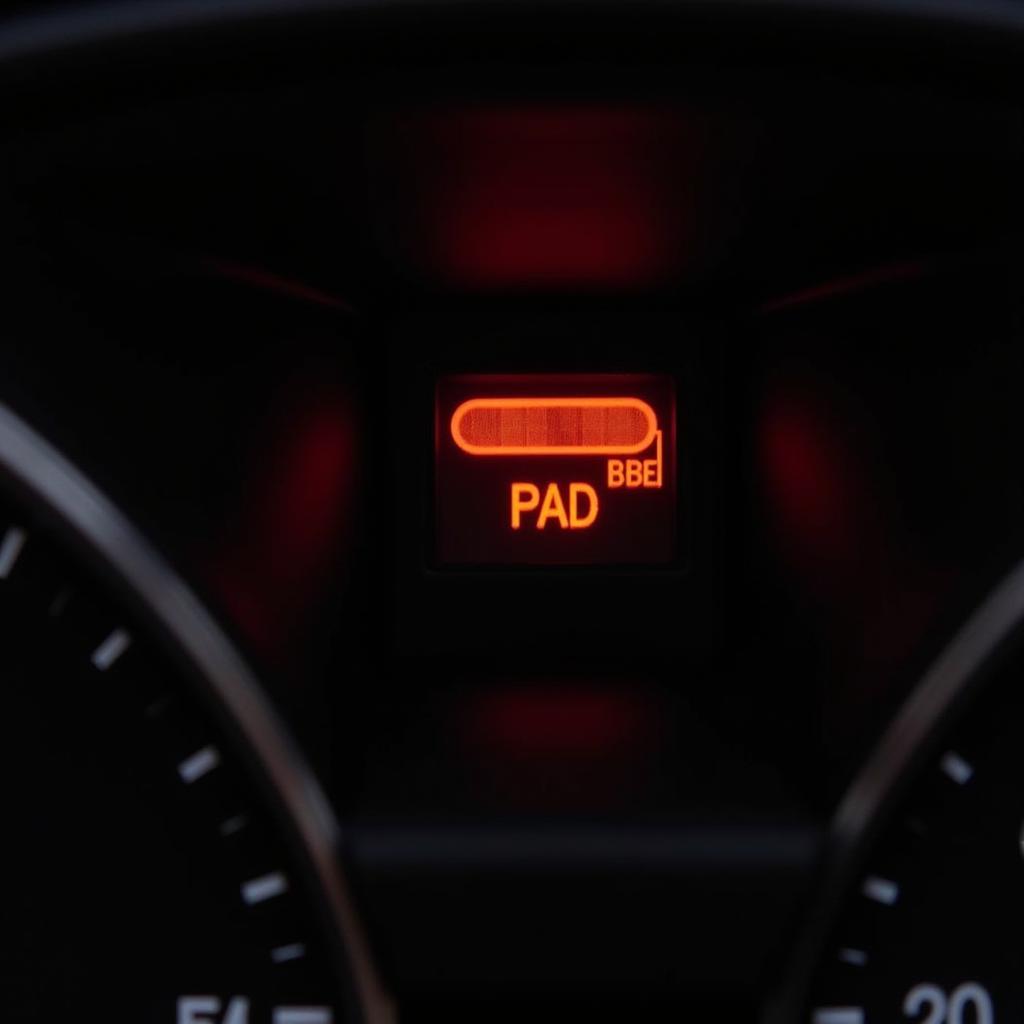A brake warning light illuminating on your BMW dashboard can be a cause for concern. This article aims to provide you with a comprehensive understanding of what causes these warnings, how to diagnose the problem, and the potential solutions, including remote software programming and installation. It’s crucial to address brake warnings promptly to ensure your safety and prevent further damage. We’ll explore various scenarios related to the “brake warning bmw” issue, covering everything from simple fixes to more complex situations requiring professional diagnosis. You can find a solution to reset your brake warning, for example, for a BMW F10 at reset brake warning bmw f10.
Decoding Your BMW’s Brake Warning Lights
BMWs utilize a sophisticated system of sensors and warning lights to communicate the status of your braking system. Different lights indicate different problems, ranging from low brake fluid to more serious issues like a malfunctioning ABS system. Understanding these lights is the first step in addressing the issue.
Low Brake Fluid Warning
A yellow brake warning light often signifies low brake fluid. This can be a relatively simple fix, but it’s crucial to address it immediately. Low brake fluid can compromise braking performance and potentially lead to dangerous situations.
Brake Pad Wear Indicator
Another common cause of a brake warning is worn brake pads. BMWs typically have sensors embedded in the brake pads that trigger a warning light when the pads reach a certain level of wear. Ignoring this warning can result in damage to the rotors and significantly reduce braking effectiveness. For information on turning off the brake pad warning light on a BMW X5, see how to turn off brake pad warning light bmw x5.
Diagnosing the Problem: Beyond the Warning Light
While the warning light itself provides an initial indication, further diagnosis is often required to pinpoint the exact issue. This might involve visually inspecting the brake components, checking brake fluid levels, or using diagnostic tools to read error codes from the vehicle’s computer system.
Utilizing Diagnostic Tools
Modern BMWs generate diagnostic trouble codes (DTCs) that provide valuable insights into the nature of the problem. Professional-grade diagnostic tools can access these codes and help identify the faulty component or system.
Remote Diagnostics and Software Solutions
In some cases, the brake warning light may be triggered by a software glitch or require a software update. Remote diagnostic services can access your vehicle’s system wirelessly to pinpoint the issue and, in many cases, install the necessary software updates remotely. If you’re experiencing a yellow brake warning light on a 2003 540i, you might find this resource helpful: bmw yellow brake warning light bmw 2003 540i.
Addressing the Issue: From Simple Fixes to Complex Repairs
The solution to a brake warning will depend on the specific problem. Simple fixes might include topping off brake fluid or replacing worn brake pads. More complex issues may require replacing components like calipers, rotors, or even parts of the ABS system.
DIY vs. Professional Repairs
While some brake-related tasks, such as checking fluid levels, can be performed by the owner, it’s generally recommended to have brake system repairs handled by a qualified technician, especially when dealing with more complex issues.
 BMW Brake Pad Replacement
BMW Brake Pad Replacement
Preventative Maintenance: Keeping Your BMW’s Brakes in Top Condition
Regular maintenance is key to preventing brake problems and ensuring optimal performance. This includes routine brake inspections, fluid flushes, and timely replacement of worn components. For more information about the DSC brake warning light, visit bmw dsc brake warning light.
The Importance of Quality Parts
Using high-quality brake components is essential for safety and performance. Genuine BMW parts or equivalent high-quality aftermarket parts are recommended for optimal braking performance and longevity.
“Regular brake system maintenance is not just about safety; it’s about preserving the performance and driving experience your BMW is known for,” says Michael Schmidt, Lead Automotive Engineer at Bavarian Auto Solutions.
BMW Mini Brake Fluid Warning Light
If you own a BMW Mini, you might encounter a specific brake fluid warning light. Learn more about this specific issue at bmw mini brake fluid warning light.
 BMW Brake System Inspection
BMW Brake System Inspection
“Addressing a brake warning promptly can prevent minor issues from escalating into major repairs, saving you time and money in the long run,” adds Schmidt.
In conclusion, a brake warning bmw should never be ignored. Understanding the different warning lights, diagnosing the problem accurately, and taking appropriate action will ensure your safety and maintain the optimal performance of your BMW.
“Remember, your brakes are your car’s most critical safety system. Don’t compromise on their maintenance or repair,” concludes Schmidt.
FAQ
- What does a yellow brake warning light mean on a BMW? It typically indicates low brake fluid or worn brake pads.
- Can I drive my BMW with the brake warning light on? It’s not recommended. Have the issue diagnosed and addressed as soon as possible.
- How often should I check my BMW’s brake fluid? Check your brake fluid level monthly and have it flushed according to your BMW’s recommended maintenance schedule.
- How long do BMW brake pads last? Brake pad lifespan varies depending on driving style and conditions but typically lasts between 30,000 to 70,000 miles.
- What is involved in a BMW brake inspection? A thorough inspection includes checking the brake pads, rotors, calipers, brake lines, and fluid level.
- What is remote diagnostics for BMW brakes? Remote diagnostics involves accessing your car’s computer system wirelessly to diagnose brake issues and sometimes perform software updates.
- What should I do if my BMW’s ABS light comes on? Have the issue diagnosed by a qualified technician immediately as this indicates a problem with the Anti-lock Braking System.


